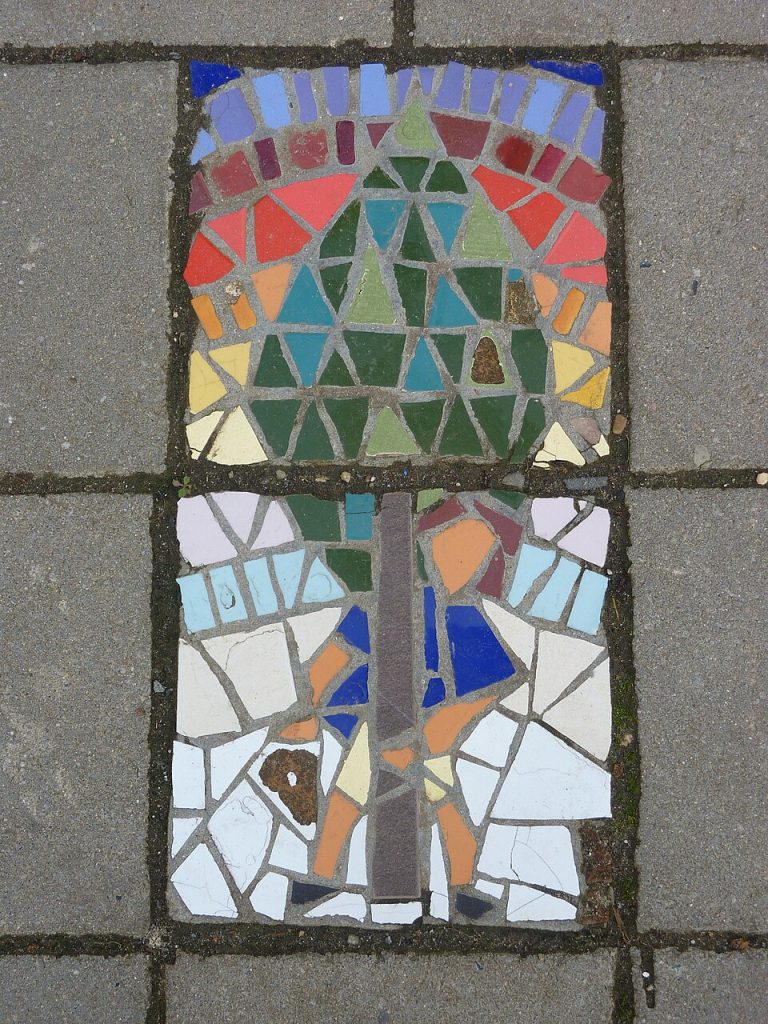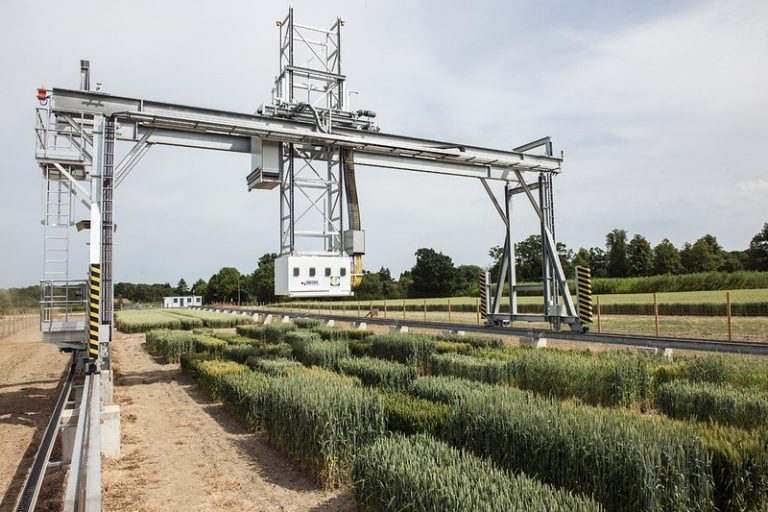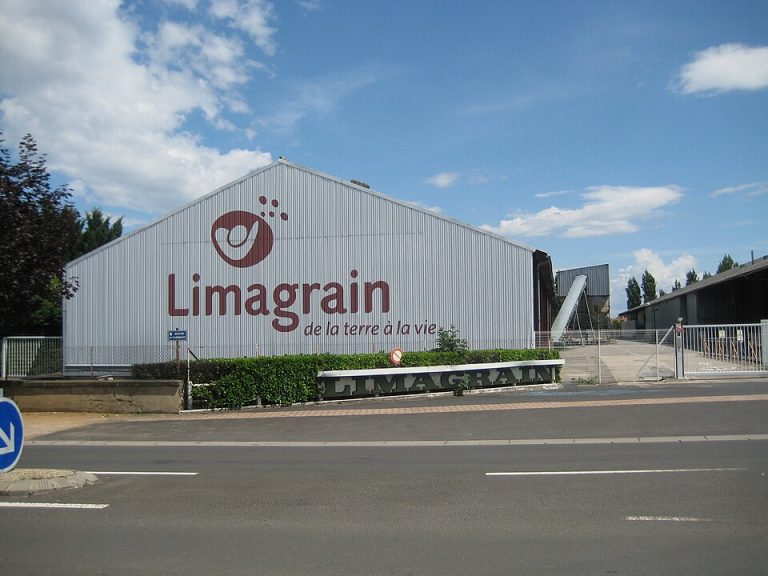News
Bioengineered poplars to save the climate?
A few months ago, Living Carbon, a US start-up, announced that it had developed and planted genetically modified poplar trees in 2023. These trees are said to absorb more quickly carbon dioxide, one of the greenhouse gases whose current accumulation in the atmosphere and oceans is causing problems for the Earth’s climate. As part of this program, Living Carbon is acquiring carbon credits to finance its work. The aim is to reduce the photorespiration of poplar and pine plants. What is photorespiration? What would be the ecological repercussions of this modification of photosynthesis?

Based on evolutionary considerations about the fossilization of carbon that sequestered atmospheric carbon dioxide in the past, Living Carbon claims, in an article written by its co-founderi, that thanks to its start-up, in “three hundred million years from now, a similar story could be told about today; an era of carbon sequestration so massive the rocks will tell our story”. This refers to a time scale out of all proportion to the anthropogenic evolution of atmospheric carbon over the last 200 years.
To reach this time scale, Living Carbon uses biotechnologies to genetically modify trees in order to increase their photosynthesis and thus subtract more carbon dioxide (CO2) from the atmosphere. On closer examination, we learn that the trees in question are the product of bioengineering combined with artificial intelligenceii. They are said to be “climate-intelligent”.
Living Carbon also takes advantage of scientific knowledge to propose bioengineering solutions that reduce the decomposition and mineralization of carbon in the soil (which produce carbon dioxide) and, they claim, restore life to destroyed soils.
Photorespiration of plants considered a “waste”
In an articleiii written by researchers almost all working at Living Carbon, we read that “harnessing the power of synthetic biology to enhance the natural ability of carbon sequestration in plants, especially non-annuals, provides a biological approach to further reduce CO2 levels in the air. Here, we selected a photorespiration bypass pathway and tested its effectiveness on photosynthetic enhancement in a hybrid poplar, INRA717-IB4”.
These INRA717-IB4 hybrid poplars were obtained in France, at Inrae in Versaillesiv. They were then donated by Oregon State University to the American start-upv. Engineering to reduce photorespiration will be applied to these plants.
A few biological considerations
Photorespiration reduces photosynthetic efficiency in plants, hence the term ‘waste’ used by bioengineers. However, while photorespiration is apparently detrimental to the photosynthetic activity of the cells in which it occurs, it is nonetheless useful, even necessary, for other cellular functions, and limiting it would not necessarily result in better plant growth. Some studies have suggested, for example, that photorespiration may be essential for the fixation of nitrogen from soilvi nitrates and for the synthesis of certain amino acids. In addition, photorespiration protects plants when light levels are high. In this case, photosynthesis reactions get out of control, with the risk of producing active forms of oxygen that are harmful to the chloroplast and the plant cell. By consuming oxygen through respiration, plants are protectedvii. The modification of trees also reduces their resistance to disease, which is the price to be paid for accelerated growth. By growing faster, trees use more energy, to the detriment of the synthesis of certain amino acids, including those involved in pathogen resistance.
Photorespiration is reduced in tropical plants such as maize, sugar beet, millet and sorghum, which only grow in soil rich in humus, and therefore carbon. This balance was established over the course of evolution in warm climates. In a way, this is what bioengineering would like to copy from photorespiration.
Reducing photorespiration by ‘bioengineering’ poplars
Based on work carried out on tobaccoviii, the Living Carbon team is proposing to genetically modify poplars using transgenesis and syntheticix interfering RNA (siRNA). The genes concerned are those modifying two photorespiration enzymes. A DNA sequence encoding the RNAi is also required. The expected result is the release of CO2 into the chloroplast and the preferential orientation of RuBisCo activity towards the photosynthesis pathway, rather than photorespiration.
This is simple to say, but it involves an excessively complex and numerous number of steps, the definition of which is, at this stage, only the result of computer calculations and the effectiveness of which in reality has not, at this stage, been verified. To sum up, young hybrid poplar plants need to be grown in greenhouses under completely controlled physical (light, temperature, humidity) and chemical (growing medium) conditions. Then, fragments of tissue (explants) will be taken from these shoots and brought into contact with bacteria, a strain of Agrobacterium tumefaciens (a bacterium originating from the soil), which has been genetically modified beforehand and which will be the vector for the modifications. Information on the genes of interest, the essential ancillary sequences and the transgenic sequence encoding the RNAi – 41 transgenic ‘events’ in all – is collected from computer databases. They have been identified in a variety of species (pumpkin, arabica, green algae, bacteria, etc.) and the genetic construction of these ‘events’ is designed using specialised software. The GM bacteria are maintained in an artificial culture medium where all the components are controlled and, once they come into contact with the poplar explants, they are supposed to infect them in order to genetically modify themx. Finally, these poplar calluses are grown in vitro on controlled culture media, before being reared in ‘growth’ rooms with unmodified controls.
For the time being, an increase in tree biomass has been observed in the laboratory. But the correlation with increased carbon dioxide capture leaves much to be desired. We can readxi that “the increase in biomass production in these engineered poplar trees may not fully reflect the efficiency enhancement in photosynthesis. […] Biological systems are powerful when it comes to carbon drawdown and storage, but at the same time, are complex. Needless to say, it is a challenging goal to engineer trees to make a meaningful impact on climate change”.
At the same time, however, Living Carbon has planted 5,000 bioengineered poplar trees in the southern United States. “It will be interesting to see how the field trial results align with that from growth room studies”, says the start-up.
The role of artificial intelligence in Living Carbon’s work
The co-founder of this start-up, Maddie Hall, was president of Open Al, whose main shareholder is Microsoft. Open AI also helped finance Living Carbon. Open Al is a company whose mission is “to ensure that artificial general intelligence—AI systems that are generally smarter than humans—benefits all of humanity”xii.
In short, the idea is to use artificial ‘neural’ networks (the version of AI that produces autonomous cars and ChatGPT, for example), but also other forms of AI, to scan components of the existing biological world, model them and use them. In this case, limiting the natural photorespiration of trees to reduce the carbon dioxide content of the atmosphere. For Living Carbon, these trees, which will be bio-objects, should be planted on a large scale.
Living Carbon combines knowledge of the evolution of living organisms and photosynthesis from AI and the latest biotechnology research. AI is used to observe nature today and the traces of its history. The tree, and even less the ecosystem, are not considered as a whole. All that is considered is a mechanistic and very partial vision of the living world, as rendered by AI.
Living Carbon ignores the impact on ecosystems
Certain questions arise: what will happen when wild species are contaminated by pollen from bioengineered poplars? When their seeds germinate in other forests? What happens to the Agrobacterium bacteria used as vectors? Could they end up in the soil, transferring the modified genes to other species? These poplars will consume even more water – isn’t that a problem at a time when water is becoming increasingly scarce? Doesn’t this type of cultivation have an impact on soil quality? And above all, will this change in trees have any real impact on the carbon dioxide content of the atmosphere?
Will increased photosynthesis be effective in the carbon cycle?
The carbon cycle can be read on the scale of human life, it is the biological cycle: photosynthesis (which consumes CO2) on the one hand and respiration-fermentation (which produces CO2) on the other. This cycle was balanced before industrialisation and the concentration of carbon dioxide in the air was stable.
The carbon cycle can also be seen on a geological timescale, over millions of years. The largest reservoir of carbon on Earth is found in carbonates (essentially limestone) and carbonated siliceous rocks (mineral carbon). Moreover, the weathering of these rocks during erosion consumes carbon dioxide. It is therefore a carbon sink, the largest on Earth, but a very slow one (millions of years). Hence the idea of geo-engineers to crush rocks in the presence of water to reduce the greenhouse effect more quickly!
Fossil rocks, such as coal, oil and natural gas, are the result of the incomplete breakdown of organic matter by climatic and soil conditions millions of years ago. Combustion of these fuels today brutally releases the trapped carbon. Similarly, the calcination of limestone into cement and the industrial and chemical exploitation of soils release large quantities of carbon dioxide. The same applies to the manufacture of synthetic fertilisers, which also release nitrous oxide, an extremely powerful greenhouse gas, when spread.
Soil, in its natural state or when farmed organically, stores carbon over several decades in the form of humus molecules produced by decomposition and fermentation by soil organisms. Soil: our carbon ‘life insurance’! However, the fast-growing monocultures that these bio-engineered poplars represent are depleting the humus in the soil. Humus is ultimately mineralised more quickly by respiration, with carbon being rapidly returned to the atmosphere. Only slow-growing, long-lived trees, diversified forests and peasant agro-ecology (slow rotations of diversified associated crops, crop-livestock associations, agro-forestry, etc.) maintain humus and therefore carbon storage in the soil.
A global vision of the carbon cycle over the long term (and in relation to other cycles, notably those of water and nitrogen) is needed to think about the Earth’s future climate. Living Carbon is well aware of this, as it also claims to be slowing down the decomposition of wood in the soil (its work is less advanced and is said to use technologies based on metals such as copper and nickel spread around the roots) by taking a multidisciplinary approach to actively engage in areas of research such as reducing the rate of decomposition of wood to achieve prolonged carbon storage and even faster carbon storage. Will the means employed be the right ones? Time will tell in… a few million years!
Living Carbon and green growth
Living Carbon makes a lot of climate promises with its ‘nature-based solutions’, but it is not interested in reducing the use of fossil fuels, since it offers carbon compensation to companies that release carbon dioxide into the atmosphere. In other words, it offers a right to pollute. Its best clients are major private investors: Temasek Holdings (Singapore), Toyota Ventures (San Francisco), Fellicis Ventures (Silicon Valley)xiii, Microsoftxiv… The company is also supported by public money, notably via the US Department of Agriculture. Living Carbon is in fact a no-nonsense company that is part of green capitalismxv.
Once again, the promises of techno-solutionism are leading us to use nature and fields as laboratory benches and to feed the financial markets. For bioengineering computer scientists, photosynthesis has a flaw: photorespiration. However, the simple fact that it has persisted over time is evidence of a balance within the chlorophyll organism, a balance that will inevitably be destroyed.
More generally, isn’t it inconsistent to tamper with photosynthesis, the process at the origin of the development of life on Earth?
i Living Carbon, Patrick Mellor, « For Carbon Removal, Scaling is More Critical than Permanence », 28 June 2023.
ii Elliot Hershberg, « Living Carbon: Photosynthesis-Enhanced Trees – Why and how to engineer trees; climate biotech business strategy », The Century of Biology, 22 September 2024.
iii Yumin Tao et al., « Enhanced Photosynthetic Efficiency for Increased Carbon Assimilation and Woody Biomass Production in Engineered Hybrid Poplar », Forests 14, no. 4: 827, 2023.
iv Malte Mader et al., « Whole-genome draft assembly of Populus tremula x P. alba clone INRA 717-1B4 », Silvae Genetica, vol. 65, no. 2, Sciendo, 2016, pp. 74-79.
v Yumin Tao et al., « Enhanced Photosynthetic Efficiency for Increased Carbon Assimilation and Woody Biomass Production in Engineered Hybrid Poplar », Forests 14, no. 4: 827, 2023.
vi Contributors for Wikipédia, « Photorespiration »,
vii RN’Bio, « La photorespiration » (in French).
viii Paul F. South et al., « Synthetic glycolate metabolism pathways stimulate crop growth and productivity in the field », Science 363, 4 January 2019.
This work is funded by Bill and Melinda Gates Fundation
ix Yumin Tao et al., « Enhanced Photosynthetic Efficiency for Increased Carbon Assimilation and Woody Biomass Production in Engineered Hybrid Poplar », Forests 14, no. 4: 827, 2023.
x Ibid.
xi Ibid.
xii Read on Open AI’s website.
xiii Clay, « How Much Did Living Carbon Raise? Funding & Key Investors », 14 April 2025.
xiv Living Carbon, « Living Carbon Announces Agreement with Microsoft for 1.4 Million Tonnes of Carbon Removal from Reforestation of Former Mine Lands in Appalachia », 21 April 2025.
xv Elliot Hershberg, « Living Carbon: Photosynthesis-Enhanced Trees – Why and how to engineer trees; climate biotech business strategy », The Century of Biology, 22 September 2024.









